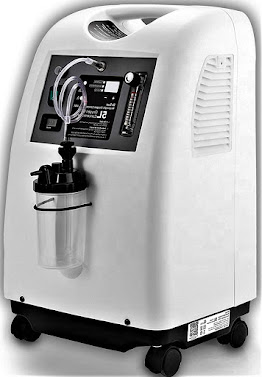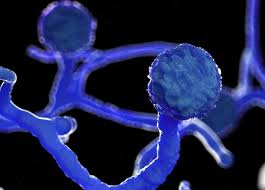OXYGEN CONCENTRATOR | HOW IT WORKS | DEMERITS|
Health is everything for all of us. As we are very well aware about the worst condition of present scenario. Due to the outbreak of Novel Corona Virus, the COVID and NON-COVID patients are facing lots of problem like:-
- Lack of proper care of the patients in the Hospital.
- Lack of beds(ICU/ NON ICU) in the Hospital.
- Lack of oxygen in both government and non government Hospital.
- Throwing PPE kits, Mask, Face shield , in the open area.
- This irresponsible behaviour of Medical staff can spread the infection rapidly.
Among all these problems the most clearheaded problem is the lack of oxygen in various Hospitals. We can fulfill the demand of patient for oxygen upto limited extent by applying oxygen cylinder .
But the major problem with oxygen cylinder is it's refilling. following it, it's transportation is also costlier. There is also lack of oxygen container in many states. There are less no. Of crygenic tankers for its storage and transport.
An absolute alternative of oxygen cylinder is oxygen concentrator.
 |
| OXYGEN CONCNTRATOR |
History behind Oxygen Concentrator
Home clinical oxygen concentrators were imagined in the mid 1970s, with the assembling yield of these gadgets expanding in the last part of the 1970s. Association Carbide Corporation and Bendix Corporation were both early producers. Prior to that period, home clinical oxygen treatment required the utilization of weighty high-pressure oxygen chambers or little cryogenic fluid oxygen frameworks. Both of these conveyance frameworks required successive home visits by providers to renew oxygen supplies. In the United States, Medicare changed from charge for-administration installment to a level month to month rate for home oxygen treatment during the 1980s, causing the tough clinical hardware (DME) industry to quickly embrace concentrators as an approach to control costs. This repayment change significantly diminished the quantity of essential high pressing factor and fluid oxygen conveyance frameworks being used in homes in the United States around then. Oxygen concentrators turned into the liked and most normal methods for conveying home oxygen. The quantity of producers entering the oxygen concentrator market expanded dramatically because of this change. Association Carbide Corporation concocted the sub-atomic strainer during the 1950s which made these gadgets conceivable. It additionally developed the main cryogenic fluid home clinical oxygen frameworks during the 1960s.
Non Medical uses of Oxygen Concentrator
Mechanical cycles may utilize a lot higher pressing factors and streams than clinical units. To address that issue, another cycle, called vacuum swing adsorption (VSA), has been created via Air Products. This interaction utilizes a solitary low-pressure blower and a valve that turns around the course through the blower so the recovery stage happens under a vacuum. Generators utilizing this cycle are being advertised to the hydroponics business. Modern oxygen concentrators are regularly accessible in a lot more extensive scope of limits than clinical concentrators.
Modern oxygen concentrators are at times alluded to as oxygen generators inside the oxygen and ozone businesses to recognize them from clinical oxygen concentrators. The qualification is utilized trying to explain that modern oxygen concentrators are not clinical gadgets supported by the Food and Drug Administration (FDA) and they are not appropriate for use as bedside clinical concentrators. In any case, applying the oxygen generator classification can prompt disarray. The term, oxygen generator, is a misnomer in that the oxygen isn't produced all things considered with a compound oxygen generator, but instead it is concentrated from the air.
Non-clinical oxygen concentrators can be utilized as feed gas to a clinical oxygen framework, for example, the oxygen framework in an emergency clinic, however administrative endorsement is required, for example, by the FDA, and extra separating is by and large required.
Portable Oxygen Concentrator
POCs work on a similar guideline as a home concentrator, pressure swing adsorption. The fundamental set up of a POC is a scaled down air blower, a chamber filled containing the strainer, a pressing factor evening out supply and valves and cylinders.
During the primary portion of the principal cycle the inward blower powers this air through an arrangement of compound channels known as a sub-atomic sifter. This channel is comprised of silicate granules called zeolite which draw in (by means of adsorption) nitrogen particles onto their surfaces more firmly than they draw in oxygen atoms – this removes the nitrogen from the air and thinks the oxygen. At the point when the ideal immaculateness is reached and the principal chamber arrives at about 20 psi the oxygen and limited quantities of different gases are delivered into the pressing factor balancing supply. As the pressing factor in the primary chamber drops the nitrogen is desorbed, the valve is shut, and the gas is vented into the surrounding air. The majority of the oxygen created is conveyed to the patient; part is taken care of once more into the sifters (at extraordinarily decreased strain) to flush away left over nitrogen, and set up the zeolite for the following cycle. The climate contains around 21% oxygen and 78% nitrogen; the 1% leftover portion is a combination of different gases which go through this interaction. A POC framework is practically a nitrogen scrubber able to do reliably delivering clinical grade oxygen of up to 90%.
A Zen-O compact oxygen concentrator; it is fit for beat and ceaseless stream activity
The main thought for a POC is its capacity to supply satisfactory advantageous oxygen to calm hypoxia (oxygen lack) during ordinary exercises and dependent on the patients breathing cycles. Other factors incorporate most extreme oxygen virtue, the number and augmentation of settings for changing oxygen stream, and battery limit (or number of extra batteries) and force string alternatives for re-energizing.
Heartbeat portion
Heartbeat portion (likewise called irregular stream or on-request) POCs are the littlest units, regularly weighing just 5 pounds (2.2 kg). Their little size empowers the patient to not squander energy acquired from the treatment on conveying them. Here the unit irregularly directs a volume (or bolus) of oxygen in milliliters per breath (mL/breath). Their capacity to ration oxygen is critical to keeping the units so conservative without forfeiting the length of oxygen supply.[14] Most of the current POC frameworks give oxygen on a heartbeat (on-request) conveyance and are utilized with a nasal cannula to convey the oxygen to the patient.
Consistent stream
With consistent stream units, oxygen conveyance is estimated in LPM (liters each moment). Giving constant stream requires a bigger atomic strainer and siphon/engine gathering, and extra gadgets. This builds the gadget's size and weight (roughly 18–20 lbs).
There are a few units accessible that are fit for working in one or the other mode.
With on-request or heartbeat stream, conveyance is estimated by the size (in milliliters) of the "bolus" of oxygen per breath.
A few employments
Clinical:
Permits patients to use oxygen treatment day in and day out and decrease mortality as much 1.94 occasions not exactly for simply overnight use.
A Canadian report in 1999 inferred that an OC establishment consistent to the legitimate guidelines gives a protected, solid, cost proficient essential clinic wellspring of oxygen.
Improves practice resilience, by permitting the client to practice longer.
Helps increment endurance all through everyday activities.
A POC is a more secure alternative than hefting around an oxygen tank since it makes the cleaner gas on demand.
POC units are reliably more modest and lighter than tank-based frameworks and can give a more drawn out supply of oxygen.
Business:
Glass blowing industry
Skin care
Non-compressed aircraft
Dance club oxygen bars despite the fact that specialists and the FDA have communicated some worry with this.
Frequently Asked Question on Oxygen Concentrator
What is oxygen concentrator?
Oxygen concentrator is a machine which separates the nitrogen from the nature and supply only concentrated oxygen through the mask or cannula to the patients. It is good alternative of the oxygen cylinder.
How it works?
The atmospheric air consists of about 21% oxygen, 78% nitrogen, and then other gases. The oxygen concentrator works by absorbing air from the surroundings and filtering out nitrogen and other gases. The absorbed oxygen is stored in a cylinder to be inhaled by the user.
At what time we have to use oxygen concentrator?
During the initial stage of COVID-19 infection. We can use the oxygen concentrator. But when our oxygen level (spO2 ) decreased upto 95. Then we have to shift towards the oxygen cylinder. About 21% oxygen and 78% Nitrogen is present in the atmosphere. In the normal conditions our lungs are able to take the oxygen directly from the nature.
What are the demerits of oxygen concentrator?
As we know that the oxygen concentrator is an effective machine. It can be used by the patient having the mild COVID-19 infection. But there are certain demerits of oxygen concentrator over oxygen cylinder like
It can be used in the condition when the infection is mild.
Maximum supply of the oxygen through this machine is very less.
The price of oxygen concentrator is very high about 40000Rs to 90000Rs. It can not be affordable by poor people having low income.
Thank you






